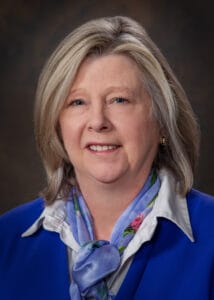In the News: Have It Your Way – The Future of K-12 Education
Originally published in Tidewater Family. Click here to view article.
 Not too long ago the concept of school was universal. Children sat in desks neatly aligned in rows. A teacher at the front of the room, acting as the sole imparter of knowledge. Students were only to speak when they were called upon, and only to address the topic of direct inquiry by the teacher. Instructional content was driven by a uniform curriculum and evaluated by the administration of paper and pencil testing. Sound familiar?
Not too long ago the concept of school was universal. Children sat in desks neatly aligned in rows. A teacher at the front of the room, acting as the sole imparter of knowledge. Students were only to speak when they were called upon, and only to address the topic of direct inquiry by the teacher. Instructional content was driven by a uniform curriculum and evaluated by the administration of paper and pencil testing. Sound familiar?
Change came slowly at first. Families began choosing to educate their children at home, often for religious reasons but sometimes because their children chaffed under the rigid requirements of traditional educational settings. New models of learning emerged, and virtual schools grew exponentially. Still, by 2018 only 0.5% of American children were homeschooled.
Fast forward to 2023. According to the National Center for Education Statistics, three million students have fallen off the rolls of traditional public schools across the country since COVID-19 began. The trend away from public school and toward homeschool and other educational options has expanded exponentially. Between 2018-19 and 2021-22, 12% of elementary schools and 9% of middle schools saw an enrollment decline of more than 20%. As the movement away from traditional public schools continues to grow, the question becomes, where are these students going?
 COVID spurred a revolution in education. While some students who left the public school system went to smaller private or parochial schools, an entirely different set of options began to appear. Small groups of parents banded together to employ teachers to privately educate groups of 10 to 15 students in their homes, creating the concept of learning pods or microschools. In these groups, educators had the freedom to develop curriculum built on student interests while cultivating the fundamental skillsets of reading, writing and arithmetic. The idea that community resources like museums and recreation centers could be integrated into the school day became commonplace. Education was no longer the sole purview of the school; rather, the concepts of “school” and “education” diverged. The world, writ large, became school.
COVID spurred a revolution in education. While some students who left the public school system went to smaller private or parochial schools, an entirely different set of options began to appear. Small groups of parents banded together to employ teachers to privately educate groups of 10 to 15 students in their homes, creating the concept of learning pods or microschools. In these groups, educators had the freedom to develop curriculum built on student interests while cultivating the fundamental skillsets of reading, writing and arithmetic. The idea that community resources like museums and recreation centers could be integrated into the school day became commonplace. Education was no longer the sole purview of the school; rather, the concepts of “school” and “education” diverged. The world, writ large, became school.
 Today, parents have even more options. Online learning is offered synchronously (with a live teacher) or asynchronously (with recorded content and accompanying assignments.) Part of the instructional day can be spent in a brick-and-mortar school and part can be spent in a virtual school to expand curricular options. Synchronous instruction can be delivered in-person, online, or even in the Metaverse. And the way educators evaluate learning is as diverse as the ways the content can be received.
Today, parents have even more options. Online learning is offered synchronously (with a live teacher) or asynchronously (with recorded content and accompanying assignments.) Part of the instructional day can be spent in a brick-and-mortar school and part can be spent in a virtual school to expand curricular options. Synchronous instruction can be delivered in-person, online, or even in the Metaverse. And the way educators evaluate learning is as diverse as the ways the content can be received.
The truth of education in this moment is that personalizing learning for each student has moved to the forefront. No longer do students need to be passive recipients of knowledge. They can be actively engaged in planning and executing their instruction. Kids can receive education where and when they benefit from it most, in their personal areas of interest. The notion that students can engage in school “their way” is an idea whose time has come.

Judy Jankowski, Ed.D. CBA Head of School

